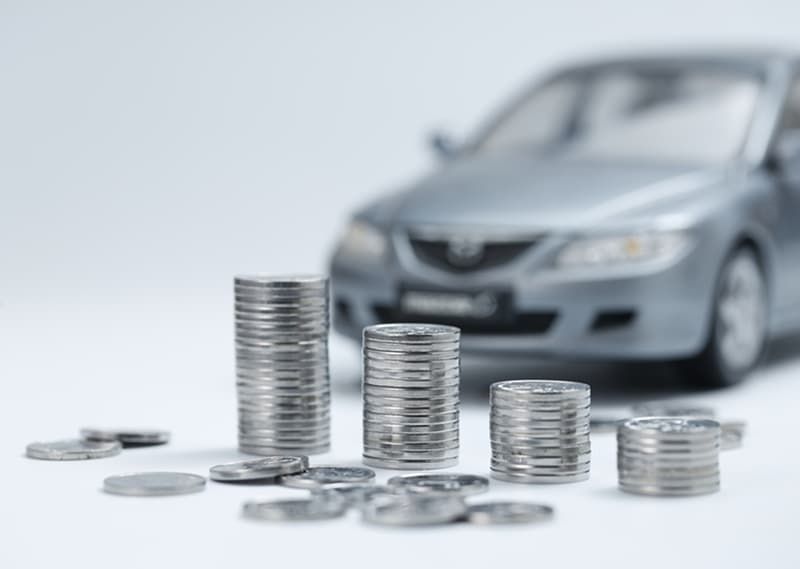How Car Depreciation Occurs and Effective Tips to Reduce It
Car depreciation is a fundamental concept that every car owner needs to know. It is the reduction in value of a vehicle over time due to causes such as wear and tear, market demand, and economic conditions. The natural depreciation impacts both private and business car owners, influencing resale prices, insurance settlements, and tax allowances. Awareness of depreciation allows the owners to make more informed purchasing decisions, selling decisions, and decisions on car maintenance.

Depreciation begins the instant a new car is removed from a lot. Normally, a new car depreciates approximately 20% in the first year. Subsequent years see the value continue to decline gradually, typically reaching about 60% depreciation within five years. Depreciation is calculated by several factors that involve make, model, mileage, condition, accident history, and broad market trends such as fuel costs and supply chain shortfalls. Luxury cars and certain makes, for example, could depreciate faster than econo-models since they are more costly to repair or have lower demand. Depreciation occurs, but having insight into the way it works allows the owner to make the most of its financial impact.
Computing depreciation on a car is based on whether the vehicle is used for business or personal reasons, and whether computing is for personal data or tax returns. Two main methods of computing are acceptable to both the IRS and other purposes of tax computing: the straight-line method and the Modified Accelerated Cost Recovery System (MACRS). The straight-line method splits the vehicle’s cost over its useful life. For instance, a vehicle that is $30,000 and is to last five years would imply the yearly depreciation expense is $6,000. It is normal when the vehicle is used largely not for business or when converting from straight mileage allowances to actual expenses.
On the other hand, the MACRS is an accelerated depreciation program which allows for higher deductions in the first years of possession, as is the similar decrease in value at the outset. Cars and trucks under MACRS are classified as five-year property and in the first year, these items lose 20% of their value. If 60% of a company vehicle’s use is for business and it costs $40,000, the depreciable basis is set at $24,000. Plugging the MACRS rates into the formula, the owner would be able to claim around $9,600 in the first year. The IRS also provides annual depreciation limits for passenger autos, which may cap the amount deductible, especially for luxury vehicles.
For personal use, depreciation is often estimated based on market value decline. A general rule of thumb once was that a new car loses around 20% of its value in the first year and around 60% in five years. Online valuators commonly use data about make, model, miles, and condition to estimate current market value, which provides owners with a sense of how much their vehicle has depreciated.
While depreciation cannot be prevented altogether, there are a number of common-sense measures owners can adopt to retard the pace at which their vehicle depreciates. Imposing limits on how many miles a car can travel is beneficial. If you drive your car less than 15,000 miles each year, it is likely to keep its value. If somebody has to drive a long distance to work every day, they can share the driving or switch their driving days with others. In addition, by keeping the car serviced often, repairing it as soon as possible and having good maintenance records, you can ensure it will sell for a higher price. People will pay more for well-maintained vehicles.
Not crashing is a major consideration. Crash history takes a huge chunk out of a car’s value, so driving carefully and frequently and parking in safe spots avoids damage that accelerates depreciation. Furthermore, certain makes and models can dictate how quickly a car loses its value. Vehicles that are still popular retain their worth longer than those specialty or luxury vehicles with low resale bases. Finally, keeping the looks of the automobile by washing it regularly, not leaving it outside under extreme weather conditions for an extended duration, and having protective covers keeps the inside and outside intact, which helps to make them more valuable at resale.
 Disclaimer:
Disclaimer:
The content provided on our blog site traverses numerous categories, offering readers valuable and practical information. Readers can use the editorial team’s research and data to gain more insights into their topics of interest. However, they are requested not to treat the articles as conclusive. The website team cannot be held responsible for differences in data or inaccuracies found across other platforms. Please also note that the site might also miss out on various schemes and offers available that the readers may find more beneficial than the ones we cover.
Featured Articles
-
 Health & Wellness
Health & WellnessWhy Cotton Swabs Endanger Your Ears
-
 Finance
FinanceHow to Lock in the Best Mortgage Rate Before Everyone Else Does
-
 Health & Wellness
Health & WellnessSpecific Foods and Ingredients That Support Hepatic Health
-
 Travel
TravelInsider Strategies to Unlock Last-Minute Flight Deals
-
 Travel
TravelWhere to Travel in Europe from September to December
-
 Finance
FinancePayPal’s New “Pay With Crypto” Marks the Beginning of a Borderless Payment Age




